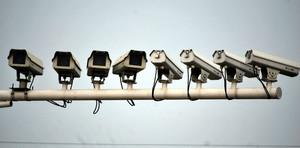SurveillanceIf surveillance cameras are to be kept in line, the rules will have to keep pace with technology
The growing prevalence of cameras and greater understanding of the many ways in which we are surveilled has led many – including the current commissioner, Tony Porter, to voice concern that Britain is “sleepwalking into a surveillance state”. This raises critical questions about whether we can be confident that all these cameras are being used in a way the public would approve of – and if not, whether regulation can force CCTV operators into line. In the future, surveillance camera processes will become more opaque, more sophisticated, and potentially integrated with data from a variety of sources, including social media, meaning decisions about who to survey and who determines intensive surveillance will be determined by big data and algorithms. Any regulatory framework that does not or cannot keep up with the pace of change will soon become worthless.

Camera surveillance technology may be outrunning law // Source: theconversation.com
It has been said that Britain has more surveillance cameras than any other country in the world. This proliferation of CCTV cameras led the government to establish a surveillance camera commissioner responsible for overseeing their governance – the only country in the world to do so. In another first, the commissioner has now released a national strategy for England and Wales to set out how CCTV should be operated and to ensure that cameras are used in the public interest.
The growing prevalence of cameras and greater understanding of the many ways in which we are surveilled has led many – including the current commissioner, Tony Porter, to voice concern that Britain is “sleepwalking into a surveillance state”. This raises critical questions about whether we can be confident that all these cameras are being used in a way the public would approve of – and if not, whether regulation can force CCTV operators into line.
It’s not just the sheer number of cameras that is of concern. Deployed by many public sector and private organisations in a fragmented and piecemeal manner over the last twenty years, different systems offer vastly different technical capabilities and are used in different ways. There is a lack of standardization and limited public awareness about what CCTV cameras are capable of and what they are used for. This is particularly important given developments in facial recognition and movement tracking technology.
There are also concerns about the misuse of cameras, for example camera operators abusing their position for voyeurism or commercial gain. Or cameras that do little to deter crime, where image quality was too poor for use in court, or even instances where cameras that could have provided vital footage were switched off to save money. With advances in digital technology, such as face recognition, there are also issues about privacy, data sharing and profiling and the possible “chilling effect” that this will have on society.
